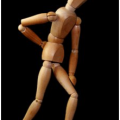Introduction:
Cervical spondylosis is an ordinary condition more frequent in the elderly, and it involves the cervical region in the spine, which is the neck area. This systemic disease affects the cervical bones, discs, and ligaments, which are the cushions that enable normal bone-to-bone connections. For a deeper look into cervical spondylosis, the following sections discuss its origin, symptoms, as well as its approaches to management.
 |
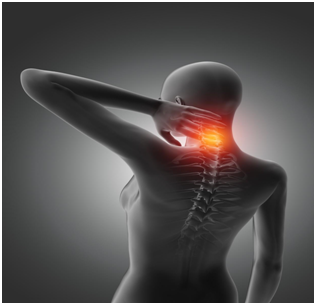 |
What is Cervical Spondylosis?
Cervical Spondylosis is also referred to as Cervical Osteoarthritis or Neck Arthritis, and it is characterized by the wear and tear of the cervical spine structures. It is evident that the parts of the cervical spine that comprise the human body continue to change as one ages, and some may end up with pains, aches, and other related symptoms. This is a prevalent condition, and particularly a common development in individuals of more than fifty years of age, and may contribute to a decreased general well-being.
Causes of Cervical Spondylosis:
Cervical spondylosis is chiefly predisposed by the process of aging that affects the spine. The following reasons contribute to its causes:
-
Degeneration of Discs:
The intervertebral discs also undergo changes with age that result in loss of water content and reduction in their size and height, and therefore they have a higher propensity to get injured.
-
Bone Spurs:
For instance, osteophytes, which are bony outgrowths referred to as bone spurs, may form following changes in the joints as the body attempts to repair the degradative alterations and may cause nerve compression.
-
Herniated Discs:
Disc degeneration is a condition resulting from dander and varies from the outermost layer of the disc that acts like a barrier and hard skin inside it containing a jelly-like substance causing a tear to appear and push against the spinal nerves.
-
Ligament Stiffness:
Intervertebral structures and muscles can become thickened and fibrotic and the ligaments bridging the vertebrae themselves can become hardened and act as rigid bars which limit mobility and cause discomfort.
-
Previous Neck Injuries:
Any previous mechanical stress on the cervical spine or prior injuries to the neck put the affected person at higher risk of cervical spondylosis.
-
Genetics:
A pre-existing history of neck pain or osteoarthritis, a personal history of cervical spondylosis, or a family history of the condition may be risk factors for this condition.
-
Occupational Hazards:
Wear and tear is probably based on work characteristics that include awkward postures, as well as repetitive neck movements, forceful lifting or pushing, and prolonged car or office settings.
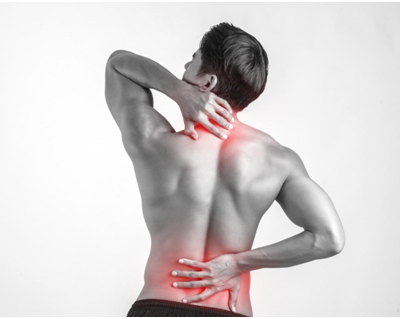
Symptoms of Cervical Spondylosis:
The early signs of cervical spondylosis may be subtle and not very specific and this is because the cervical spine is the central pillar of the spinal column and may be affected in varying degrees depending on the progression of the disease or the presence of nerve impingement. Common symptoms include:
-
Neck Pain:
These pains should be either constant or sporadic, and they may be mild or severe.
-
Stiffness:
Occasionally, it limits a person’s ability to move the neck in certain ways, such as turning the head to the side.
-
Headaches:
Stinging and sharp neck and head pain.
-
Shoulder Pain:
Areas of pain that can sometimes be felt in the shoulders and upper arm.
-
Radiculopathy:
The possible symptoms of nerve compression manifest themselves as pain, numbness, or tingling, particularly down the arms.
-
Myelopathy:
Precise pain in the back, neck, chest, arms, legs and forearms, weakness of limbs, loss of coordination, and difficulty in movement.
-
Grinding or Popping:
Sensation of vibration or noise, such as grating or crackling when tilting the neck.
Smoking and Cervical Spondylosis go hand in hand — Here’s why you need to call it ‘QUITS’!
Quitting smoking is easy to do — learn how it can reduce your cervical spondylosis risk today and finally get the support you need! On the same note, smoking speeds up the deterioration of the cervical spine, thus increasing soreness and constant pains in the neck area. Every time you take a drag of that cigarette, venous blood flow, and with it, a steady stream of life-sustaining nutrients, is interrupted and their flow is slowed both in the discs of your back as well as your limbs.
 |
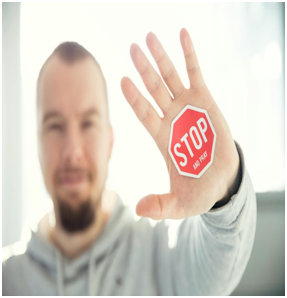 |
These discs depend on oxygen and nutrients to stay healthy as well as execute their primary assignment correctly. When you smoke, you modify their ability to obtain the nutrients that might allow the muscles to rebuild its fibers damaged by the smoking habit and by smoking you just speed up the process for the muscle structure to degenerate.
For this reason, smoking escalates inflammation and causes it to occur throughout the body, including the spinal region. Researchers also noted that this inflammation raises the intensity and discomfort of the signs of cervical spondylosis because it becomes much more difficult to ease. Eliminating smoking means that you would be decreasing inflammation internally; hence the neck pain would be considerably reduced, as well as you’ll see improvement in your overall spinal health.
Imagine a future where you wake up one morning, you don’t feel that pain in the neck anymore, or you are able to engage in some form of activity without pain and discomfort. Smoking cessation is the initial step towards creating that future for ourselves. The emphasis is on not simply living longer but living better, and that is a worthy goal to fight for. Every time you want to smoke, and you resist it, you are taking a big step toward a healthier you since your body starts repairing itself from the effects of smoking each day.
Circulation increases, thus drawing back towards the spine the vital elements needed to heal or nourish the spinal cord. You should know that there are resources for smoking cessation, including prescriptions, nicotine patches, or group and individual therapies. The advantages of quitting cannot be overemphasized, and they begin at the initial stages of cessation. Easy circulation, decreased inflammation, and boosted nutrition to your spinal discs are only the start.
It also means that as the days go by, you will notice that the pain is decreasing, your range of motion increases and so is the level of your overall wellness. Make the decision today to quit smoking and give your cervical spine the care it deserves. Your future self will thank you for your commitment to a healthier, pain-free life. Take control of your health, reduce the burden of cervical spondylosis, and embrace a brighter, smoke-free future!
Diagnosis of Cervical Spondylosis:
Diagnosis typically involves a combination of the following:
➔ Medical History: Thorough review of past medical records with special emphasis on specific symptoms and diseases.
➔ Physical Examination: Measuring the ability to bend, stretch, and rotate the limbs and the trunk, possible reflexes, muscle power and sensitivity.
➔ Imaging Studies:
- X-rays: To feel out for developing bone spurs and altered vertebral positioning.
- MRI: To illustrate the structures of soft tissues, which include discs and nerves.
- CT Scan: For parts that show the bones in detail.
- Nerve Function Tests: Electromyography (EMG), which is performed to determine the level of activity in the nerves and muscles.
Treatment of Cervical Spondylosis:
Treatment options aim to relieve pain, improve function, and prevent further damage. They can be categorized into conservative, interventional, and surgical approaches:
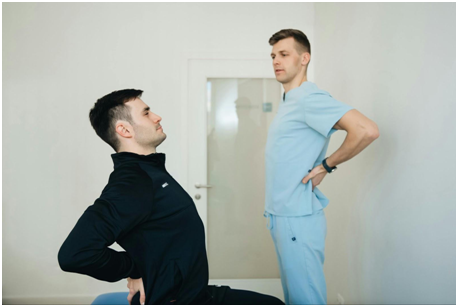
a. Conservative Treatments:
Medications:
- Pain Relievers: If capsules are not available then over-the-counter medications like Paracetamol or Tylenol can be used.
- Nonsteroidal Anti-inflammatory Drugs (NSAIDs): It can also be treated with drugs such as Ibuprofen or naproxen to help in reducing the inflammation as well as the pain that is associated with it.
- Muscle Relaxants: To reduce muscle contractions. The use of muscle relaxants is applied in such areas likely to relieve muscle cramps or to curb involuntary contractions of muscles.
- Corticosteroids: The short-term utilization of the management of severe inflammation.
- Physical Therapy: Appropriate exercises for massaging the neck and appropriate stretches, usually for people with neck strain and constant aches. Some of them are identified to be flexibility exercises, muscle-building exercises as well as correction exercises.
b. Lifestyle Modifications:
- Ergonomics: This example involves the ergonomics of a workstation since it deals with changing the environment from which most neck strain is derived.
- Activity Modification: Reduction of activities that worsen the condition of a patient or make their symptoms worse.
- Neck Support: Limiting the use of cervical collars to ‘short-term interventions for specific conditions’ suggests further that pre-use assessment must independently include an evaluation of the need for the collar.
c. Interventional Treatments:
Injections:
- Epidural Steroid Injections: Steady to decrease the inflammatory processes in the area of nerve structures.
- Facet Joint Injections: Just for treating definite painful joints, an analyst realizes that.
- Traction: By placing weights on the neck and gently pulling it to extend, the pressure may be gradually taken off the nerve root.

d. Surgical Treatments:
Surgery is considered when strict medications do not yield positive results and when any sign greatly limits the quality of life. Common surgical procedures include:
- Discectomy: Surgical resection of a variety of tissues and nerve roots as well as severing or trimming of herniated or damaged discs to lessen the pressure put on the nerves.
- Laminectomy: A surgical procedure in which one or more sections of the vertebra (lamina) are partially removed to increase its capacity to accommodate the spinal cord and/or nerves.
- Fusion: The process of linking two or more vertebrae together as a means of creating strength in the spine.
- Artificial Disc Replacement: Using a surgical technique where part of the disc that has been damaged is removed and replaced with an artificial disc to achieve motion between the disc space.
Living with Cervical Spondylosis:
Managing cervical spondylosis often requires a comprehensive approach:

-
Regular Exercise:
Diet and exercise, including low-intensity exercises such as walking, swimming, and yoga can help maintain a healthy spine as well as a healthy lifestyle.
-
Healthy Diet:
Nutrition, especially foods containing calcium and vitamin D, is important in increasing the strength of the bones.
-
Weight Management:
Being overweight means that excess pressure is always around the bones and especially the spine so holding a good weight is good for the spine.
-
Pain Management:
Heating/cooling techniques, massage, and acupuncture may assist in relieving the pain.
-
Support Networks:
Particularly, people with CRP can benefit from attending support groups or seeking professional counseling, which is able to assist with managing chronic pain as well as its emotional manifestations.
Conclusion:
Cervical spondylosis is an age-compassionate condition that is experienced commonly in the elderly due to deterioration of the cervical spine. Although it can cause a considerable amount of pain and disability, patients are usually advised to make the necessary lifestyle modifications, take medications if needed, and, in extreme cases, have surgery to alleviate the condition and minimize further impact on their well-being. Cervical spondylosis is a chronic condition requiring proper management, and therefore, knowledge of what to do can go a long way in improving the patient’s quality of life.












